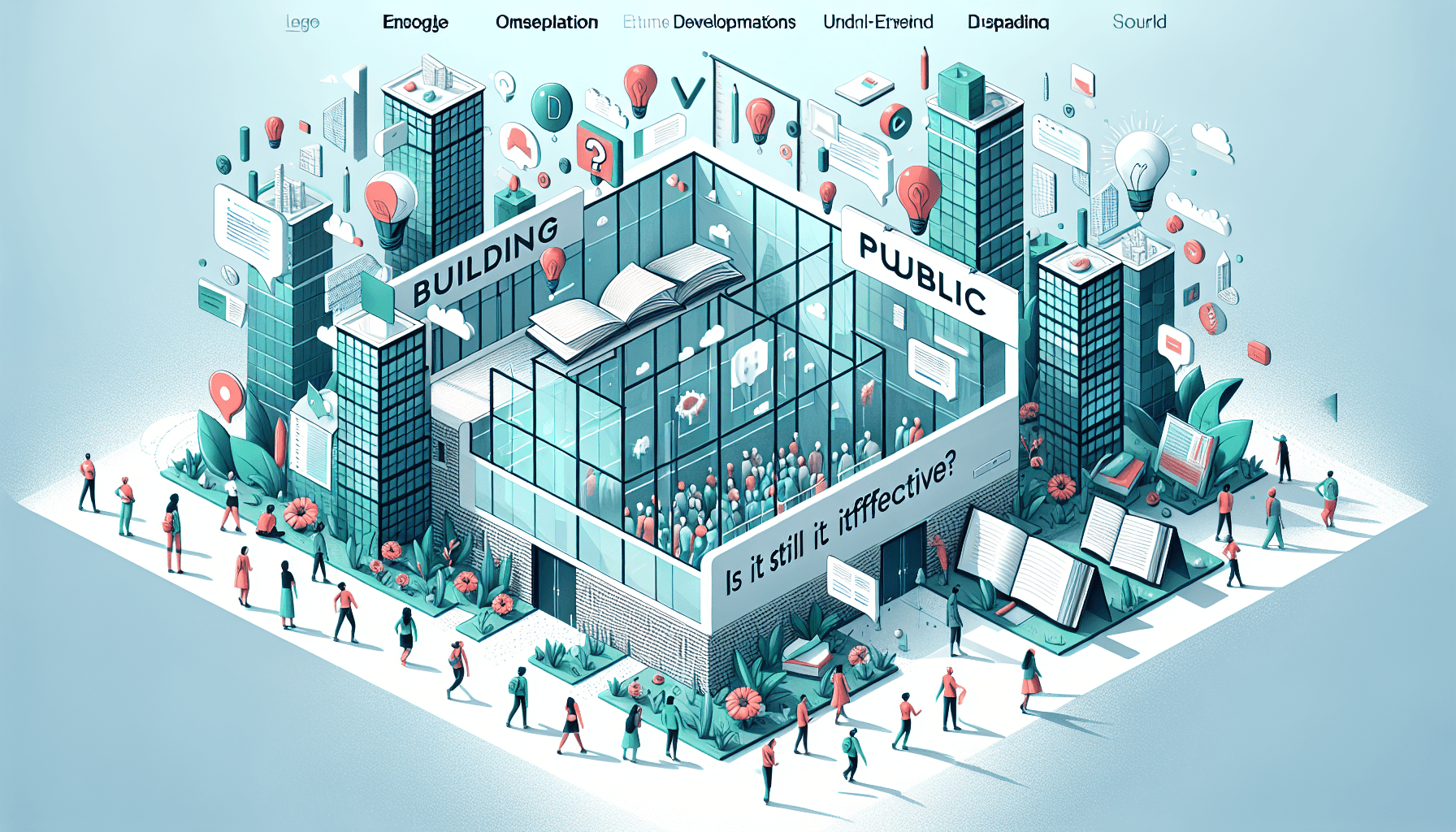Today in Edworking News we want to talk about #BuildinginPublic. Since joining the indie hacker community a few months ago, I've been observing what everyone is doing with great curiosity. One thing I immediately noticed, is that everyone talks about "build in public". In case you're unfamiliar with the term: build in public is an intentional practice of creating content and sharing your company’s story as it unfolds — with transparency, openness and vulnerability.
 What is Building in Public?
What is Building in Public?
Building in public is a practice where entrepreneurs share their journey, including successes and failures, in real-time. This often involves sharing revenue figures, product updates, and personal reflections. The idea is to create a transparent and engaging narrative that attracts a community of followers and potential customers.
 The Popularity and Potential Overuse
The Popularity and Potential Overuse
Initially, the concept of building in public seemed like a refreshing and innovative approach. However, over time, it appears that many indie hackers may be overdoing it. On platforms like Twitter and Mastodon, the timeline is flooded with posts about revenue milestones and sales boosts, often overshadowing more substantive updates about product features and long-term plans.
While sharing achievements can be inspiring, the repetitive nature of these posts can sometimes come off as bragging rather than providing value. The key issue here is the balance between sharing achievements and offering meaningful insights that benefit the community.

 Does Building in Public Actually Work?
Does Building in Public Actually Work?
Ten years ago, building in public was a novel concept, popularized by figures like @levelsio. This approach helped him gain significant attention and build a community around his products. However, the landscape has changed dramatically since then. The indie hacker community has grown exponentially, making it harder for individual voices to stand out.

Image: The growing indie hacker community.
The main purpose of building in public is to attract attention and build a community to sell products. But with so many people adopting this strategy, the effectiveness of standing out diminishes. It's crucial to remember that the product itself ultimately matters more than the narrative around it.
 Alternative Approaches
Alternative Approaches
Not all successful indie hackers build in public. For instance, Nick Moore, who built PopClip, tweets very little and only posts significant updates. Similarly, Danny Lin, who built OrbStack, never shares revenue figures and tweets occasionally. These examples show that focusing on building exceptional products can be just as effective, if not more so, than building in public.

 Final Thoughts
Final Thoughts
Building in public can be a powerful tool, but it's not the only way to succeed as an indie hacker. It's essential to find a balance that works for you and your audience. Don't feel pressured to adopt this strategy if it doesn't align with your goals or values.
Remember these 3 key ideas for your startup:
- Balance Transparency with Value: While sharing achievements can be motivating, ensure that your updates provide real value to your audience. Focus on product features, long-term plans, and meaningful insights.
- Quality Over Quantity: Avoid the temptation to post frequently just for the sake of it. High-quality, less frequent updates can be more impactful and engaging for your audience.
- Focus on the Product: Ultimately, the success of your startup hinges on the quality of your product. Whether you choose to build in public or not, prioritize creating something exceptional that meets the needs of your customers.
Edworking is the best and smartest decision for SMEs and startups to be more productive. Edworking is a FREE superapp of productivity that includes all you need for work powered by AI in the same superapp, connecting Task Management, Docs, Chat, Videocall, and File Management. Save money today by not paying for Slack, Trello, Dropbox, Zoom, and Notion.
For more details, see the original source.






